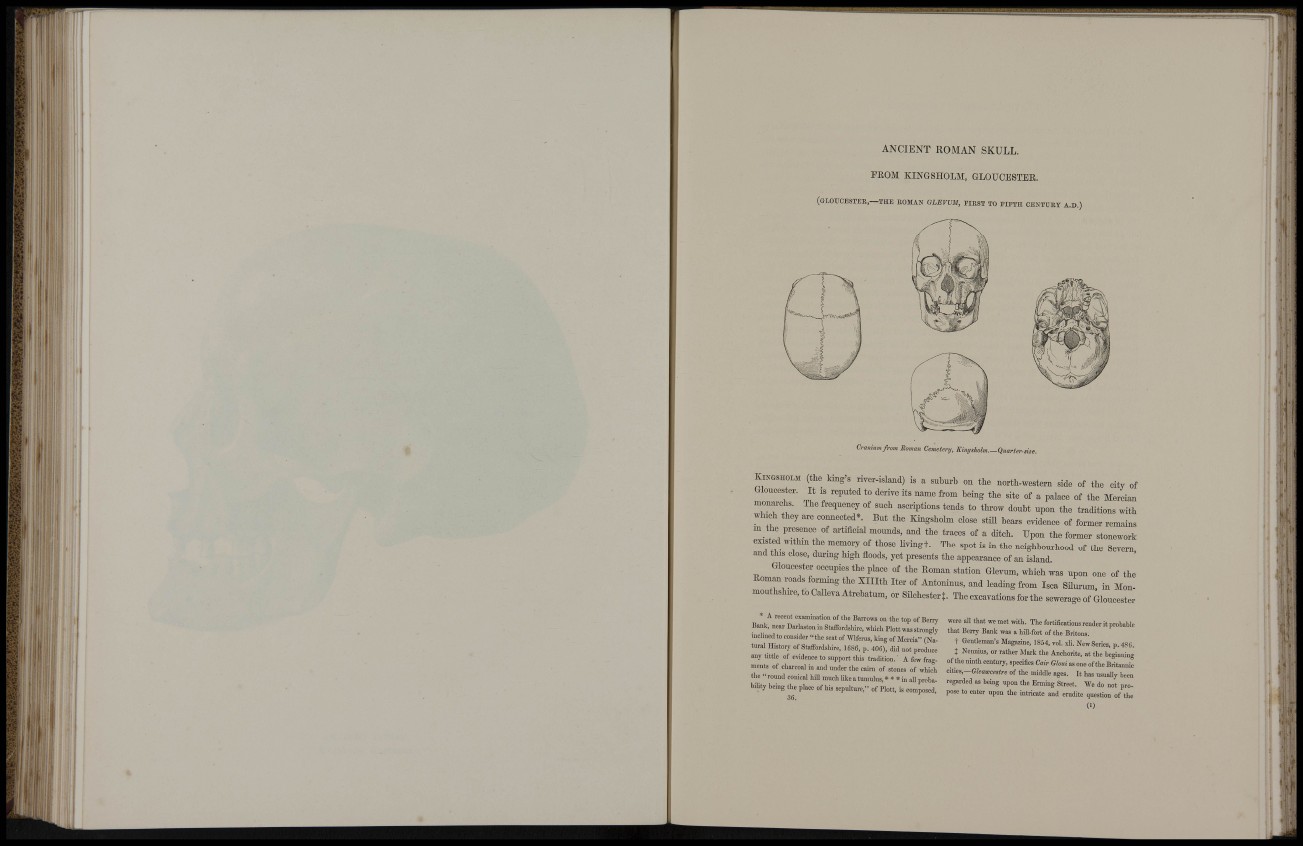
i
!::!i!|( ilt"
ANCIENT ROMAN SKULL.
PEOM KINGSHOLM, GLOUOESTEK.
(GLOTJCESTEE,—THE BOMAN GLEVUM, FIRST TO FIFTH OENTUBY A.D.)
Cranium from Roman Cemetery, Kingsholm—Quarter-size.
KINGSHOLM (the king's rivei-islimd) is a suburb on the north-western side of the city of
Gloucester. It is reputed to derive its name from being the site of a palace of the Mercian
monarchs. The frequency of such ascriptions tends to throw doubt upon the traditions with
which they are comiected*. But the Kingsholm elose still beaxs evidence of former remains
m the pi^sence of artificial mounds, and the traces of a ditch. Upon the former stonework
existed mthHi the memory of those Hvingf. The spot is in the neighbourhood of the Severn
and this close, dm-mg high floods, yet presents the appeai-ance of an island
Gloucester occupies the place of the Eoman station Glevum, which was upon one of the
mouthshn-e,toCallevaAtrebatum, or Silehesteri. The excavations for the sewerage of Gloucester
* A recent examination of the Barrows on the top of Berry
Bank, near Darlastonin Staffordshire, which Plott was strongly
inclined to consider "the seat of Wierns, king of Mercia" (Natural
History of Staffordshire. 1686, p. 406), did not produce
any tittle of evidence to support this tradition.' A few fragments
of charcoal in and under the cairn of stones of which
the " round conical hill much like a tumulus, * * * in all probability
being the place of his sepulture," of Plott, is composed,
36.
were all that we met with. The fortifications render it probable
that Berry Bank was a hill-fort of the Britons,
t Gentleman's Magazine, 1854, Tol. d i . New Series, p. 486.
i Nennius, or rather Mark the Anchorite, at the beghining
of the nmth century, specifies Cair Gloui as one of the Britannic
cities,—GiMKiceiire of the middle ages. It has usually been
regarded as being upon the Erming Street. We do not propose
to enter upon the intricate and erudite question of the
I -'i i
i i i
l i t
I - "
3 1 .
'"I i i
i
: .ti.
I
' ft
•
i
i '
• »
1 i
ii
ii